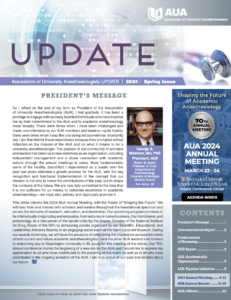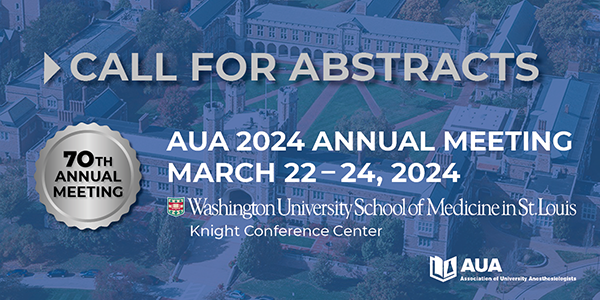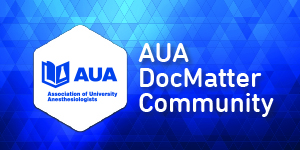The Hidden Struggle: Uncovering Barriers to Mental Health Care for Physicians
The incidence of mental health symptoms is alarmingly high amongst physicians (1). Pre-pandemic, rates of depression and anxiety were upwards of 30% (2), and post-traumatic stress disorder affects approximately 10% of physicians. Data suggests that these rates are on the rise. Meta-analysis suggests that rates of depression amongst physicians increased over the last few decades to the tune of 0.5% per year (3). Sadly, the consequences of this are profound. Physicians complete suicide at a rate 1.44 times higher than non-physicians (4), with anesthesiologists at statistically higher risk than other physicians. The reasons for this are incompletely understood but may be due to higher rates of psychological distress, access to more lethal means, or larger barriers to care access.
Treatment of these conditions is imperative. Moreover, it is effective for treatment of affective conditions (5) and prevention of suicide (6). Despite this, fewer than one-third of physicians with mental health illness seek help (1). This article reviews some of the known barriers to help-seeking amongst physicians.
Career Impact
One of the most prominent barriers to seeking help is the potential impact on physicians’ careers, both in terms of applications and opportunities. Questions about mental health arise during licensing, credentialing, commercial insurance credentialing, and malpractice insurance applications. Notably, these questions are often at odds with the Americans with Disabilities Act and national recommendations (7). Despite this, asking such questions is commonplace, originating with the faulty belief that asking these questions improves patient safety (8). Though there is no data that these practices improve safety, there is compelling data that in states that ask these questions, physicians are significantly less willing to seek mental health care (9).
The fear of career implications extends well beyond applications. Physicians and trainees fear they will be afforded fewer career or training opportunities, owing to the pervasive stigma against mental health amongst physicians. Approximately one quarter of medical students and residents cite concerns about the impact on their future career opportunities as a significant barrier to seeking mental health care (10) (11).
Stigma and Medical Culture
Despite some progress in reducing stigma in recent years, many physicians still view mental health issues as a weakness, which can make them reluctant to seeking help. In a 2010 study of over 1600 physicians, most physicians surveyed responded that it was generally believed that “A doctor with a history of depressive illness is less competent”, that “Suffering with depression is a sign of personal weakness”, and that “Many doctors think less of doctors who have suffered from depression.” (12) Ninety-six percent agreed that “Doctors should portray a healthy image.” This mentality has potentially been promoted by the “hero” narrative that emerged during the COVID pandemic. In a study of residents, 58% responded that they were reluctant to seek care because of fear of being “labeled weak, unable to handle the pressure”. Another study found that a primary barrier to help-seeking amongst trainees was fear of being accused of unprofessionalism. (13,14)
This stigma may be made worse by physicians’ resistance to taking on the patient role coupled with an inflated sense of being able to adequately self-care. In a survey of a general population of physicians, 7.4% indicated that they had self-prescribed antidepressants (12). In a survey of almost 400 psychiatrists, fewer than half reported that they would seek formal professional advice for personal mental health illness, with the majority indicating that they would choose informal advice, self-medication, or no treatment. (15) The stigma may also be worsened by physicians’ ambivalence to the value of good mental health. Poor emotional self-care is all too often normalized in medicine, sometimes to an extreme degree. In fact, in a study of physician trainees, 5% responded that they did not even think good mental health was useful. (10)
Time, Cost, and Access
Physicians have traditionally worked long hours, and not surprisingly over half of physician respondents cite time as the primary barrier to help-seeking (10,13,14). Such studies further suggest that even when it may be possible, it does not seem practical. Three-quarters of attending physicians worry that if they take time to seek help, they will be “letting their colleagues down.” In a study of house officers, half responded that they do not seek help because of “fear of being accused of shrugging work on the pretext of stress.”
Though physicians may have access within their institutions or practice settings, many are reluctant to receive care where they work, owing to confidentiality and career impact concerns (11). Consequently, more than half of respondents report that they would be less likely to seek help from within their institution, which substantially reduces access to care (10). Moreover, seeking care from providers who are out of network or paying for services “off the books” significantly adds to the cost of treatment.
Conclusion
The high rates of mental health symptoms and suicide among physicians are deeply concerning and demand action. Receiving professional help for these conditions is effective. Despite this, only one-third of physicians seek help. This article has outlined some of the known barriers to help-seeking, including concerns about the potential impact on their careers, the persisting stigma against mental health issues, and difficulties with time, cost, and access to care.
To decrease these barriers and improve mental health care for physicians, action is needed. Licensing and credentialing bodies must stop asking intrusive mental health questions that violate the Americans with Disabilities Act and national recommendations. Efforts to reduce stigma in the medical community must be intensified, including increased education about mental health, support for physicians who seek help, and encouraging role models who prioritize self-care. Additionally, healthcare organizations should improve access to confidential and affordable care by offering employee assistance programs and telehealth services. It is essential that we take action to address these barriers and help our physicians.
References
- Harvey, Samuel B, et al. “Mental Illness and Suicide among Physicians.” The Lancet, vol. 398, no. 10303, 2021, pp. 920–930., https://doi.org/10.1016/s0140-6736(21)01596-8.
- Ruitenburg, Martijn M, et al. “The Prevalence of Common Mental Disorders among Hospital Physicians and Their Association with Self-Reported Work Ability: A Cross-Sectional Study.” BMC Health Services Research, vol. 12, no. 1, 2012, https://doi.org/10.1186/1472-6963-12-292.
- Mata, Douglas A., et al. “Prevalence of Depression and Depressive Symptoms among Resident Physicians.” JAMA, vol. 314, no. 22, 2015, p. 2373., https://doi.org/10.1001/jama.2015.15845.
- Dutheil, Frédéric, et al. “Suicide among Physicians and Health-Care Workers: A Systematic Review and Meta-Analysis.” PLOS ONE, vol. 14, no. 12, 2019, https://doi.org/10.1371/journal.pone.0226361.
- Kamenov, K., et al. “The Efficacy of Psychotherapy, Pharmacotherapy and Their Combination on Functioning and Quality of Life in Depression: A Meta-Analysis.” Psychological Medicine, vol. 47, no. 3, 2016, pp. 414–425., https://doi.org/10.1017/s0033291716002774.
- D'Anci, Kristen E., et al. “Treatments for the Prevention and Management of Suicide.” Annals of Internal Medicine, vol. 171, no. 5, 2019, p. 334., https://doi.org/10.7326/m19-0869.
- Federation of State Medical Boards. PhysicianWellness and Burnout.Published April 2018. Accessed December 4, 2022. https://www.fsmb.org/siteassets/advocacy/policies/policy-on-wellness-and-burnout.pdf
- Saddawi-Konefka, Daniel, et al. “Consistency between State Medical License Applications and Recommendations Regarding Physician Mental Health.” JAMA, vol. 325, no. 19, 2021, p. 2017., https://doi.org/10.1001/jama.2021.2275.
- Dyrbye, Liselotte N., et al. “Medical Licensure Questions and Physician Reluctance to Seek Care for Mental Health Conditions.” Mayo Clinic Proceedings, vol. 92, no. 10, 2017, pp. 1486–1493., https://doi.org/10.1016/j.mayocp.2017.06.020.
- Aaronson, Alexandra L., et al. “Mental Health during Residency Training: Assessing the Barriers to Seeking Care.” Academic Psychiatry, vol. 42, no. 4, 2018, pp. 469–472., https://doi.org/10.1007/s40596-017-0881-3.
- Givens, Jane L., and Jennifer Tjia. “Depressed Medical Studentsʼ Use of Mental Health Services and Barriers to Use.” Academic Medicine, vol. 77, no. 9, 2002, pp. 918–921., https://doi.org/10.1097/00001888-200209000-00024.
- Adams, Elizabeth F.M., et al. “What Stops Us from Healing the Healers: A Survey of Help-Seeking Behaviour, Stigmatisation and Depression within the Medical Profession.” International Journal of Social Psychiatry, vol. 56, no. 4, 2009, pp. 359–370., https://doi.org/10.1177/0020764008099123.
- Grover, Sandeep, et al. “Perceived Stress and Barriers to Seeking Help from Mental Health Professionals among Trainee Doctors at a Tertiary Care Centre in North India.” Asian Journal of Psychiatry, vol. 39, 2019, pp. 143–149., https://doi.org/10.1016/j.ajp.2018.12.020.
- Holmes, Emily G., et al. “Taking Care of Our Own: A Multispecialty Study of Resident and Program Director Perspectives on Contributors to Burnout and Potential Interventions.” Academic Psychiatry, vol. 41, no. 2, 2016, pp. 159–166., https://doi.org/10.1007/s40596-016-0590-3.
- White, Alfred, et al. “Barriers to Mental Healthcare for Psychiatrists.” Psychiatric Bulletin, vol. 30, no. 10, 2006, pp. 382–384., https://doi.org/10.1192/pb.30.10.382.











